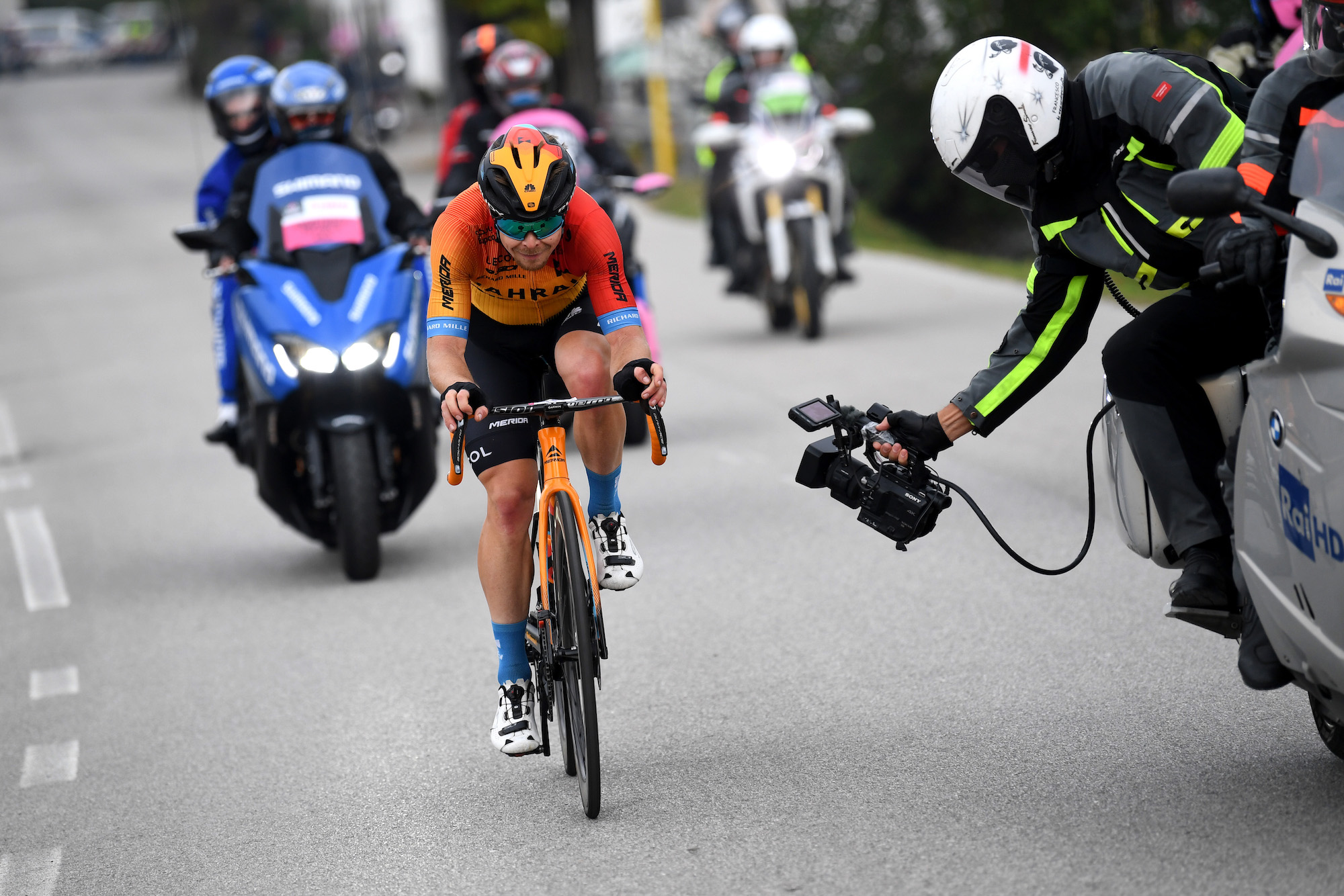Motorbikes driving alongside riders increases aerodynamic drag by up to 10 per cent, according to study
New research shows how much riders are hampered by motorbikes driving alongside them

Giro d'Italia 2020 (Photo by Tim de Waele/Getty Images)
A new study has shown that a motorbike driving alongside a rider increases the cyclists' aerodynamic drag by up to 10 per cent.
Researchers at the University of Eindhoven in the Netherlands knew how motorcycles in front of riders substantially reduced drag but wanted to find out how other moto positions affected the aerodynamics, so tested 32 different parallel and staggered cyclist-motorcycle arrangements.
Among their findings was that in a side-by-side arrangement and at a distance of between one to two metres, the rider's drag increased by between five to 10 per cent.
Of the other staggered positions tested, only two per cent of them led to a decrease of drag, showing that motos are more likely to be a hindrance rather than a help.
To come to their conclusions, the researchers used the cyclist's power model to convert the drag changes into potential time gains or losses, discovering that compared to a rider travelling at 46.8km/h alone and in calm weather, a drag increase of 10 per cent resulted in a loss of 2.16 seconds per kilometre.
The latest race content, interviews, features, reviews and expert buying guides, direct to your inbox!
The tests were performed on quarter-scale models of a cyclist and a motorbike carrying two people - replicating the driver and camera operator duo that is pervasive during televised races.
If a rider is making a solo effort for victory, a situation in which they would most likely be accompanied by a motorbike camera, this could result in them losing a maximum of 21 seconds over a 10-kilometre period if the moto stayed alongside them for the duration of that distance.
This study is believed to be the first of its kind, the only similar one having looked into the drag effect of two cyclists riding side-by-side.
With a lateral separation of 0.5m between two riders, drag increased by six per cent, with any increase negligible with lateral separation greater than 1.5m. It was also found that when two riders relay, taking turns on the front, the leading rider's drag increases as the overtaking rider begins to overtake, but that once the overtaking rider moves ahead both riders' drag decreases.
Jonny was Cycling Weekly's Weekend Editor until 2022.
I like writing offbeat features and eating too much bread when working out on the road at bike races.
Before joining Cycling Weekly I worked at The Tab and I've also written for Vice, Time Out, and worked freelance for The Telegraph (I know, but I needed the money at the time so let me live).
I also worked for ITV Cycling between 2011-2018 on their Tour de France and Vuelta a España coverage. Sometimes I'd be helping the producers make the programme and other times I'd be getting the lunches. Just in case you were wondering - Phil Liggett and Paul Sherwen had the same ham sandwich every day, it was great.